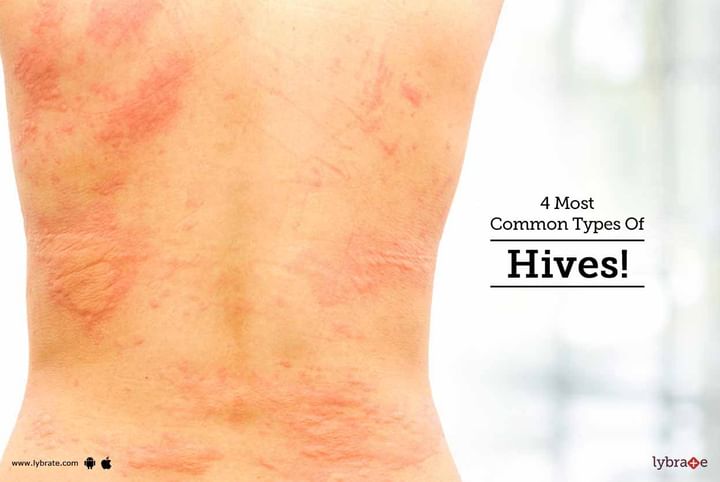4 Most Common Types Of Hives!
Hives are a common allergic reaction that appears in the form of swollen, red bumps or patches on the skin. These usually appear suddenly and cause itchiness. In some cases, it may also sting or burn. Hives can affect any part of the body including the face, ears, tongue, lips and throat. Hives are usually small in size but may grow as large as the size of a dinner plate. In some cases, hives may also join together to form plaques.
Hives are caused as a result of the production of histamines in the body that make plasma leak out of blood vessels in the skin. These histamines are released as a result of an allergic reaction, exposure to chemicals, insect bites, sunlight or adverse reactions to certain medicines. There are four main types of hives:
-
Acute Urticaria: These hives usually last for less than 6 weeks. They are triggered by insect bites, allergic reactions to food, latex, medicines or by exposure to infections. The most common food items that trigger this type of hives are chocolates, nuts, fish, tomatoes, eggs, soy, wheat and milk. Aspirin and other medicines like ibuprofen, ACE inhibitors and codeine can also trigger these hives.
-
Chronic Urticaria: Hives that last for longer than 6 weeks fall into the category of chronic urticaria. IT is harder to find what triggers a case of chronic urticaria than it is for acute urticaria. Along with the triggers mentioned above, hormonal disorders, tumours, chronic infections and immune system disorders can also trigger these hives.
-
Physical Urticaria: Hives caused as a result of physically stimulating skin are called physical urticaria. This includes sudden exposure to heat or cold, sunlight, vibrations, pressure, exercise etc. These hives usually resolve themselves within an hour and only affect the part of the skin that has been stimulated.
-
Dermatographism: Hives caused by scratching or firmly stroking the skin fall under this fourth category.
Hives can also be genetic in nature. Some people suffer from hereditary angioedema which is a painful swelling under the skin.
Hives caused by an allergic reaction can recur and hence if you suffer from hives you should try and identify the allergen. This can be done by taking an allergen test in a hospital or by changing aspects of your diet and studying the results. Hives are usually treated with antihistamines but in some cases, steroids may also be needed. However, it is usually nothing to worry about.



+1.svg)
